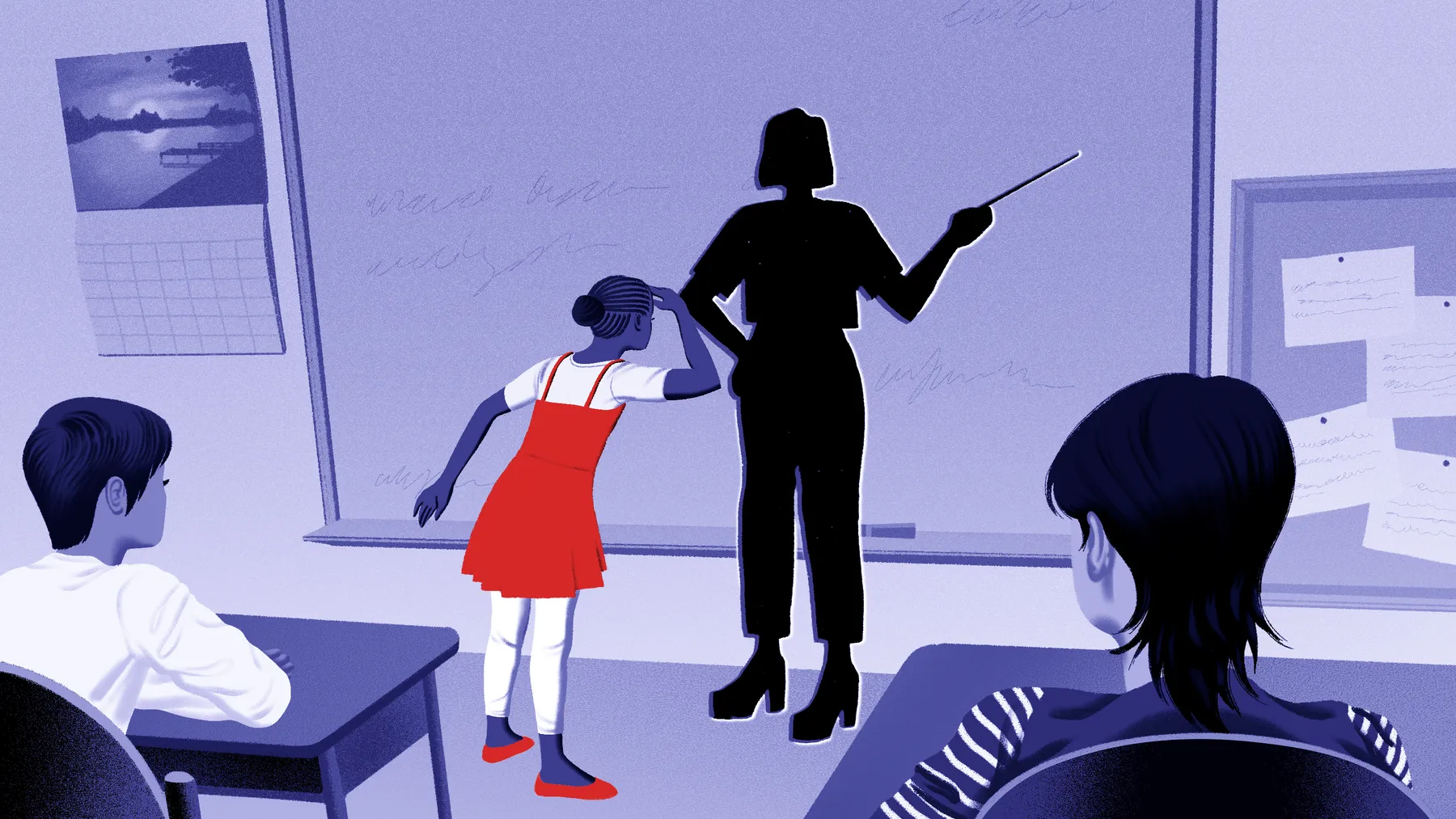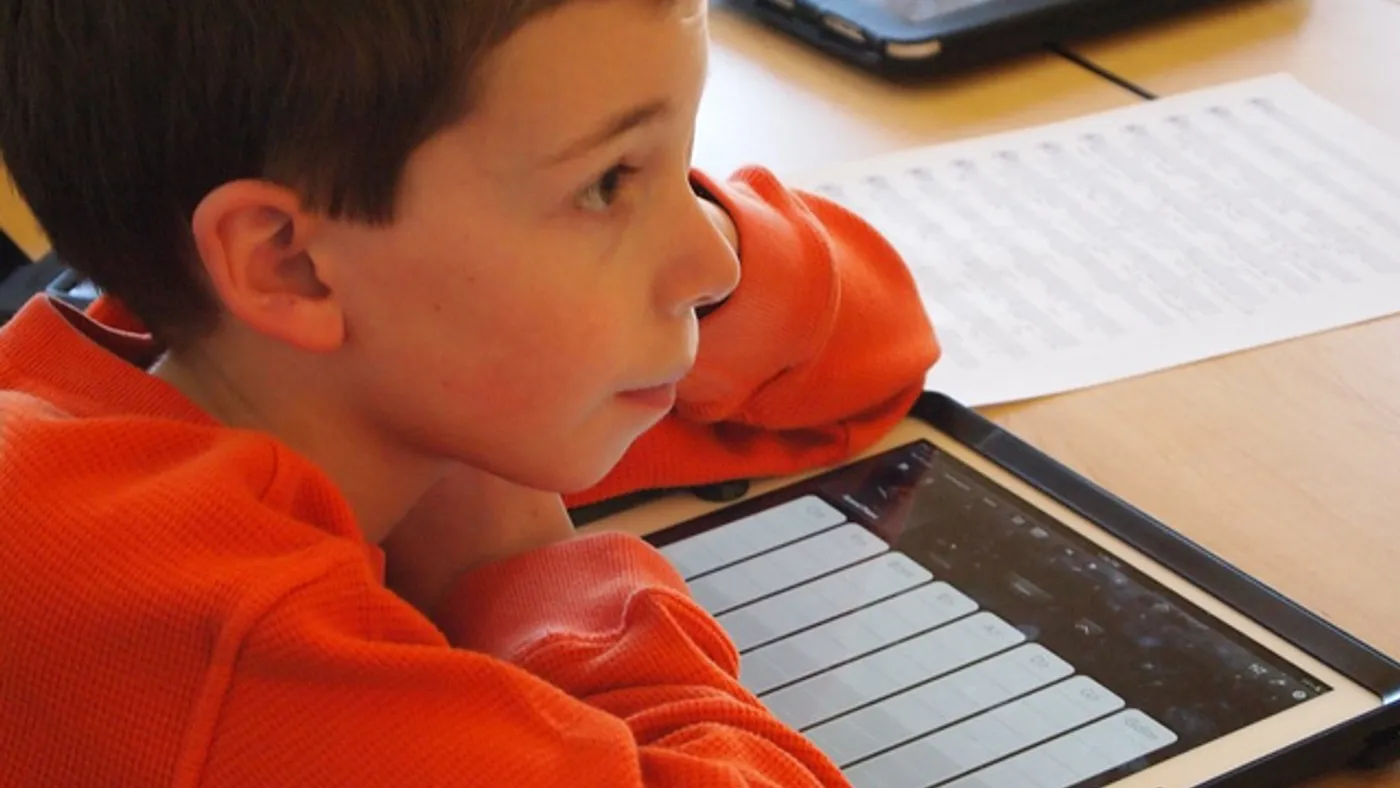
Are virtual educators an answer to teacher shortages?
Susan Padgett, a veteran math teacher of 28 years, pivoted away from in-person teaching in 2021 to do live virtual instruction as she began to have issues with her knees, which made standing and walking more difficult in a traditional school setting.
“I was struggling in the brick-and-mortar schools because of that,” Padgett said. “They don’t want you to sit down. You always have to be standing, and I was starting to have difficulties with my health.”
Though Padgett still teaches to a classroom full of students, there’s a twist: She now instructs from home, while cameras positioned around the room allow her to see her students. A large screen at the front of her room streams Padgett’s face, and an in-person paraprofessional assists in the actual classroom.
Quick fixes to address shortages and get more adults in front of classrooms — even if they aren’t yet fully certified in teaching — have ranged in recent years from enlisting military personnel and veterans without bachelor’s degrees to teach in Florida classrooms to removing bachelor’s requirements in Arizona so long as the person teaching full time is on track to earn a credential.
Padgett, however, is part of a growing trend in which certified instructors are delivering live lessons virtually to in-person groups of students. An analysis of GovSpend data by The 74 found districts are increasingly paying up for these services. For instance, districts’ annual spending on Proximity, another live virtual teacher company, jumped from $6.3 million in 2020 to more than $21 million in 2022.
Padgett works for Elevate K-12, a for-profit company that operates live virtual teaching services for districts. Currently, Padgett teaches geometry and algebra II remotely from her home in northern Wisconsin, while her 10th- and 11th-grade students attend in-person classes at Milwaukee Public Schools.

In the last year alone, estimated teacher vacancies jumped 51% as the number of open positions nationwide rose from 36,504 in 2022 to 55,289 in 2023, according to updated data from researchers at Kansas State University, University of Pittsburgh and several other institutions.
A recent RAND survey also identified ongoing signs of low pay, poor working conditions and long hours to suggest more educators may dip from traditional school settings sooner rather than later.
Meanwhile, applications to teach for Elevate K-12, which employs teachers as independent contractors, have surged since the COVID-19 pandemic, when the possibility of remote online teaching opened to many teachers for the first time, said Shaily Baranwal, the 9-year-old company’s CEO and founder. Elevate K-12 has seen a “flood of applications,” because teachers want the flexibility to work from home, she added.
Last year, Elevate K-12 hired about 1,500 active teachers on its platform. Elevate K-12 sets the curriculum and makes sure the lessons are aligned with state standards, Baranwal said. The number of districts using the company’s services has increased more than tenfold since the pandemic, from about 24 districts in 2019-20 to 260 districts in 2022-23, according to the company.
A sustainable solution?
Services from companies like Elevate K-12, Proximity Learning and Fullmind aim to put live, virtual and certified instructors in classrooms as a solution to teacher shortages. However, debate continues as to whether teacher shortages will persist at all as federal COVID-19 relief spending nears an end and student enrollment drops.
This reality already led some districts to seriously consider school closures.
Even so, the limited supply of future educators has been a persistent red flag for district administrators like Michael Harris, senior director of talent management for Milwaukee Public Schools, who noted that enrollment in teacher preparation programs is lagging. Between 2009-2010 and 2019-20, nationwide enrollment in these programs has declined from 728,310 to 601,467, according to data from the U.S. Department of Education.
I’m looking for those courses that I want our students to be able to have access to, because when we talk equity and access, I want to ensure that if my students want to take pre-calc, if they want chemistry, if they want physics, that they have the opportunity to do so.

Michael Harris
Senior director of talent management for Milwaukee Public Schools
Teacher shortages aren’t going away “until we change some things about how we get folks into teacher prep programs. There’s a lot of hurdles out there,” said Harris.
The 70,000-student Milwaukee Public Schools began working with Elevate K-12 partway through the 2022-23 school year and is expanding the number of live, virtual teachers in its classrooms this fall in the face of an estimated 200-teacher shortage, according to Harris.
And, Harris said, this isn't “a one-time solution” for the problem. Milwaukee Public Schools is focusing its 55 Elevate K-12 teachers on middle and high school math, science and special education, which are often the most challenging positions to fill.
“This is going to be part of an ongoing plan, a strategy to ensure that schools have licensed teachers in core subjects,” Harris said. “I’m looking for those courses that I want our students to be able to have access to, because when we talk equity and access, I want to ensure that if my students want to take pre-calc, if they want chemistry, if they want physics, that they have the opportunity to do so.”
Even so, Milwaukee Public Schools is still actively recruiting and hiring for in-person teachers to eventually instruct in those hard-to-fill subjects, he said.
Harris also said the district’s $3.9 million contract with Elevate K-12 saves money in the long run, given the district is not providing benefits to those teachers. Considering benefits and salary, Harris estimates it would normally cost over $5 million to hire the same number of teachers (55) for in-person instruction.
Questions remain
Meanwhile, debates are still swirling about whether live virtual instruction should in fact be a long-term solution.
For instance, board members in North Carolina’s Moore County Public Schools approved the hiring of two virtual math instructors through Fullmind. But during a discussion in September on the move, board member David Hensley said he hoped this would only be an emergency fix instead of being seen as a pilot to be expanded in the future. Leaning into the mode, Hensley said, could be a “dangerous slippery slope.”
“You start outsourcing our teachers to companies like this, and what are you guys going to do when our teachers start quitting and start being virtual teachers at another school district, say in Scotland County or Raleigh, because they get more locality pay?” Hensley asked.
Given how new this model is, there’s also not much research into the impact on student achievement.
For any of these experiments, I would make sure that they’re really paying attention to the outcomes of these experiences in order to ensure that students are learning and not wasting an entire academic year before looking into the question of to what extent are kids actually learning in classrooms with virtual teachers.

Heather Peske
President of the National Council on Teacher Quality
Heather Peske, president of the National Council on Teacher Quality, said the bottom line is that schools must ensure students are being instructed by teachers with the content knowledge and skills to be impactful.
“For any of these experiments, I would make sure that they’re really paying attention to the outcomes of these experiences in order to ensure that students are learning and not wasting an entire academic year before looking into the question of to what extent are kids actually learning in classrooms with virtual teachers,” Peske said.
During the pandemic, students’ relationships with teachers suffered when they could only connect over Zoom, Peske said. That’s why it’s key for districts using virtual instruction to ensure students can develop meaningful in-person interactions with other adults in a school building, she added.
“We know that is really important to their learning, and without it, their academic and social outcomes and their sense of belonging may really suffer,” Peske said.
Illustration: Cathryn Virginia for Industry Dive








